Getting to Know Dwarf Chain Loaches
Dwarf Chain Loach, or Ambastaia sidthimunki, is not your average aquarium dweller. They bring life to any tank with their zesty antics and striking patterns. And with the right tank conditions they’re a breeze to care for; but… make a mistake, and you’ll notice.
They come from lively waters in Thailand, so replicating this environment is will help you to keep them happy.
At a mere 6cm long, they’re perfect for adding life/cleaning up the nooks and crannies of your aquarium. But their size isn’t the only thing that’s small – their maintenance is low fuss too, making them ideal for beginners.
- But how do you set up a great Dwarf Chain Loach habitat?
- What’s the best way to feed Dwarf Chain Loaches?
- And what tips ensure they stay healthy and active?
In the upcoming sections, I’ll break down their Size, lifespan, tank setup, feeding, breeding and maintenance to help your Dwarf Chain Loaches thrive.
Bonus: Dwarf Chain Loaches will be a great addition to your aquarium cleanup crew. Diligently scavenging for leftovers and controlling snail outbreaks. This keeps your tank clean and your ecosystem balanced.
- Related: Yoyo Loach Care Guide 101
- Related: The Cutest Loach – Kuhlii Kuhlii
- Related: Black Kuhli Loach Care Guide 101
- Related: Need an Algae Cleaner – Hillstream Loach Guide
Table of Contents
The Origins and Natural Habitat of the Dwarf Chain Loach (Ambastaia sidthimunki)
Dwarf Chain Loaches come from Thailand’s vibrant river basins, where the dance of currents and companions is constant.
In these bustling waters, they’ve evolved to be social and sprightly, making them an entertaining addition to your aquarium.
Having kept Dwarf Chain Loaches for years myself, I’ve know how mimicking their natural habitat positively impacts their well-being. Get the environment right, and you’ll witness their true character and communal dance.
They thrive in water that’s moving and rich with oxygen, just like the streams back home in Southeast Asia. That being said, they’re a hardy fish that are suitable for most larger fish tank setups. Even though small in size, they need the room to scavenge and sift for food.
Creating this setting in an aquarium can be a rewarding challenge. But what does it take to recreate a piece of the Thai rivers?
| Name | Dwarf Chain Loach (Chain Loach, Dwarf loach, Ladderback Loach, Pygmy Loach or chain botia) |
|---|---|
| Scientific Name | Ambastaia sidthimunki |
| Size | 1.5-2.5 inches (3.75-6.5 cm) |
| Lifespan | 5-8 years in captivity |
| Appearance | Small, elongated body with distinctive chain-like pattern on a golden-yellow background |
| Temp | 24-30°C (75-86°F) |
| Water Parameters | Soft to moderately hard; pH: 6.0-7.5; dH: 5-12 degrees |
| Compatibility with Other Fish | Peaceful community tanks with similarly sized fish |
| Community Size | Prefers being in a group; 4-6 or more recommended for social behaviour |
| Behaviour | Playful, social, enjoys burrowing and swimming actively |
| Lighting | Moderate, can be subdued to mimic natural habitat |
| Feeding | Omnivorous – enjoys a varied diet of small pellets, live, frozen, and freeze-dried foods, snails |
| Breeding Difficulty | Difficult and rarely achieved in home aquariums, requires specific breeding conditions |
Size, Patterns & Appearance
You’ll love Dwarf Chain Loaches, with their striking pattern with bold, chain-like stripes that contour their bodies. They can vary from dark brown/orange to pale brown/silver in colouration.
It’s this distinctive design that sets them apart in most fish tanks.
From my years of keeping these fish, I’ve learned that their patterns are also unique identifiers, like fingerprints, varying from fish to fish.
Their size, capped at around 6cm, makes them a perfect fit for smaller tanks where they can still stand out.
Tank Requirements for Dwarf Chain Loach
Setting up the right tank for Dwarf Chain Loaches is key to their health and happiness. These loaches need space to play and explore, so a minimum 50-litre tank is a good starting point.
When it comes to tank size with Loaches, it’s more about the surface area of the substrate than the overall volume of water. They’ll spend most of their time foraging around plants and substrate for food, so the more width the better, the height of your tank isn’t as important.
The layout and water quality are critical. They’re used to the moving waters of Thailand, which means a filtration system that creates a gentle flow is essential to keep the Dwarf Chain Loach happy.
What else do these active little swimmers need? Let’s dive into the specifics and create the perfect aquatic playground for your Dwarf Chain Loaches.
I’ve found that loaches flourish with a soft, sandy bottom and plenty of hiding spots. Rocks, plants, and driftwood not only mimic their natural environment but also give them the security they crave.
- Substrate: A soft sandy bottom mimics their natural riverbeds, making for happy fish and a natural-looking tank.
- Plants: They love weaving through foliage and hiding when tired, so pack in those aquatic plants.
- Décor: Rocks and driftwood not only add to the aesthetics but provide essential hiding spots.
Lighting
Lighting is crucial for Dwarf Chain Loaches, but it’s often overlooked. They don’t just rely on light to see; it affects their behaviour and health.
In their natural habitat, these loaches enjoy subdued lighting, which simulates the shadowy river bottoms of Thailand. I’ve seen first-hand how the right lighting can make them more active and vibrant in colour.
Bright lights can stress them out, so it’s best to aim for a middle ground. A dimmer tank not only comforts them but also encourages natural foraging behaviour. But what’s the best way to achieve this balance?
- Floating plants can be a great addition to your tank, providing shade and making your loaches feel secure. They’ll often use these shaded areas to rest or hide, just as they would under overhanging vegetation in their natural rivers.
- They’ll often come out to forage when the lights start to dim, especially in a well stocked tank. It’s during these twilight hours that you’ll see some of their most interesting behaviours.
- Set your aquarium lights to dim in the evening, if your Dwarf Chain Loaches are feeling shy and hiding a lot.
Water Parameters for Optimal Health
While these Loaches are hardy, they become stressed by very fast moving waters. They thrive in a specific range: a pH of 6.5 to 7.5, and temperatures between 24-30°C.
Water hardness? Aim for soft to medium. between 3-12 dGH. Keep a close eye on these figures, testing weekly to ensure they’re stable. If you don’t have a heavily planted larger aquarium, then regular water changes are essential.
Ensuring good oxygenation is also crucial, which can be achieved with a combination of surface agitation and proper filtration.
Diet & Feeding
Feeding Dwarf Chain Loach is about variety and balance – key ingredients for a healthy diet.
These loaches have an appetite for snails, making them your allies against snail overpopulation. But their menu doesn’t end there. To keep them in top shape, you’ll want to include:
- Sinking pellets: They love foraging at the bottom, so pellets that sink are a must.
- Frozen or live foods: Bloodworms and brine shrimp are like a feast for them, great for a treat.
- Biodiverse Live Tanks: If you have a planted tank, there’ll be a variety of micro-organisms that the Dwarf Chain Loach loves to snack on.
A little pro tip: feed them in small amounts once or twice a day. It’s enough to fuel their energy without overdoing it.
Behaviour and Social Dynamics
Dwarf Chain Loaches are the life of the aquarium with their vivid social interactions. They zip around the tank with purpose, always on the lookout for food or play. You’ll also find them burrowing or exploring, which is why they love a tank with plenty of hiding spaces.
How many Dwarf Chain Loaches to keep together?
- Minimum: 3-4
- Ideal: 4-6+
These loaches need company of their own kind to truly thrive; a single loach is a lonely loach, and that’s something you never want to see. I’ve observed groups of them in my tanks, and it’s clear they’re happiest in numbers. Four or more is the sweet spot, allowing their social dynamics to fully unfold.
Dwarf Chain Loaches establish a pecking order but are generally peaceful. They sometimes get snippy with each other when establishing territory or during meal times (most often in smaller aquariums), but this is just part of their charm. Watching them interact is a treat for any fish enthusiast.
Compatibility with other fish is a breeze, as long as their tank mates are peaceful and of similar size.
Health and Disease Prevention
You don’t have to worry about Dwarf Chain Loach health, these little guys are hardy.
If you notice sign signs like faded colour and lethargy? Check they aren’t being stressed by other fish, this can be a common issue. Also, test for poor water conditions.
Loach Tip: Loaches are omnivorous by nature, so keep an eye out for worms and parasites they may have eaten from snails.
If you keep their environment stable, then you’ll be rewarded with a thriving clean up crew community.
In my next section, I’ll introduce the secrets to breeding these captivating creatures. Wondering how to replicate the rainy seasons of Southeast Asia in your tank? I’ll show you how.
Breeding Dwarf Chain Loach
Breeding Dwarf Chain Loach can be a bit of a puzzle, but it’s one that can be solved with patience and the right conditions.
Warning: Difficulty Level High
The first trick is to simulate their natural breeding triggers, like the onset of the monsoon season in their native habitats. This means altering water parameters to mimic these conditions, a task that requires precision.
Temperature changes and increased water turnover can encourage spawning. If you get it right, you may witness the rare sight of loaches breeding in captivity.
But it doesn’t stop there.
Once you’ve got fry, the real work begins. Juvenile care is crucial.
They need pristine water and plenty of micro-foods to grow.
Wrapping Up: Key Takeaways for Thriving Dwarf Chain Loaches in Your Aquarium
So, what’s the verdict on Dwarf Chain Loaches? They’re a keeper.
With their vibrant patterns and fun explorer personalities, these loaches bring life to any freshwater tank. They do well in a group, so consider starting with at least 4 to see them at their best.
And remember, a well-set-up tank is their playground. They’ll thank you with endless entertainment and tank cleaning services.
Thinking of adding them to your tank? Check out some of the common Dwarf Chain Loaches FAQs below.
Good luck!
FAQs on Dwarf Chain Loach
Have questions about Dwarf Chain Loach? You’re not alone. Here’s the lowdown on the most common head-scratchers. Why are my Dwarf Chain Loaches hiding all day?
- It’s natural for them to seek shelter during the day. They’re nocturnal by nature, so give them plenty of hiding spots.
How can I tell if my loaches are healthy?
- Look for vibrant colours and active swimming. If they’re lethargic or their colour is fading, something’s up.
What’s the deal with tank mates for Dwarf Chain Loaches?
- They prefer company, but choose tank mates wisely. Peaceful fish that aren’t too big or nippy make the best companions.
Do loaches need a current in their tank?
- Absolutely. A gentle flow mimics their natural habitat and keeps them happy.
Can I keep Dwarf Chain Loach with plants?
- Yes, and they love it. Plants offer them cover and a more natural environment.
Is it true they eat snails?
- Yes, they help control snail populations, but don’t rely on them as a sole food source.
How often should I feed my loaches?
- A small amount twice a day is best. Overfeeding can cause health issues and tank pollution.
What kind of substrate is best?
- Soft, sandy substrates protect their delicate barbels and let them sift through as they would in the wild.
Can Dwarf Chain Loach tolerate cooler temperatures?
- They can, but they thrive in warmer water. Keep the temperature consistent to avoid stress.
How do I breed Dwarf Chain Loach?
- Breeding in home aquariums is tough. It requires specific conditions, like mimicking the rainy season for spawning.
My loach looks bloated. What should I do?
- It could be a dietary issue or something more serious like an infection. Best consult with a vet.
Dwarf Chain Loach looks shy. Is this normal?
- They can be initially. But once acclimated, they’re quite active. Ensure they have a group to feel secure.
What are some signs of stress in my loach?
- Clamped fins, hiding, not eating, or darting suddenly are all red flags.
Wondering about something else? Chances are, I’ve tackled it in the sections above. Scroll up to get the full scoop on creating the perfect home for these charming fish.
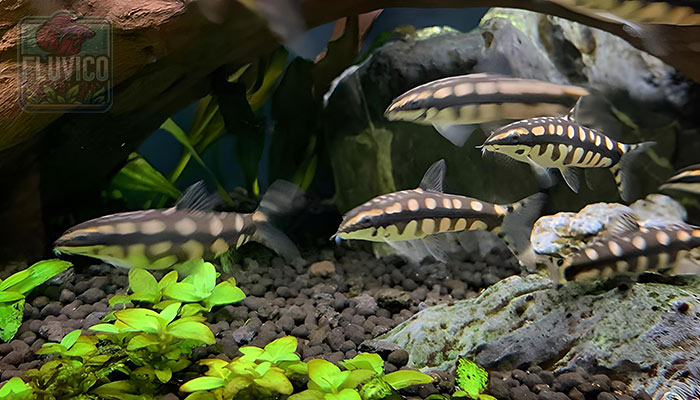

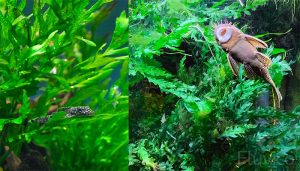



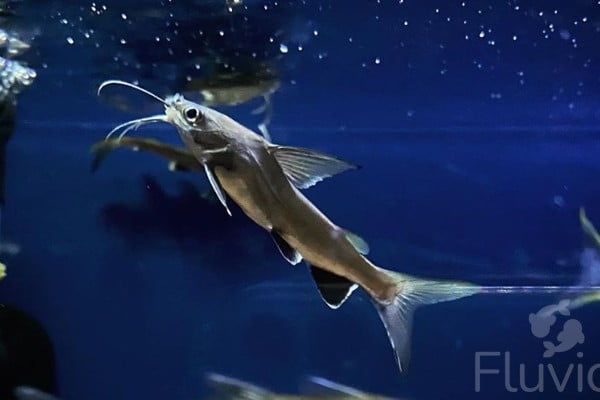
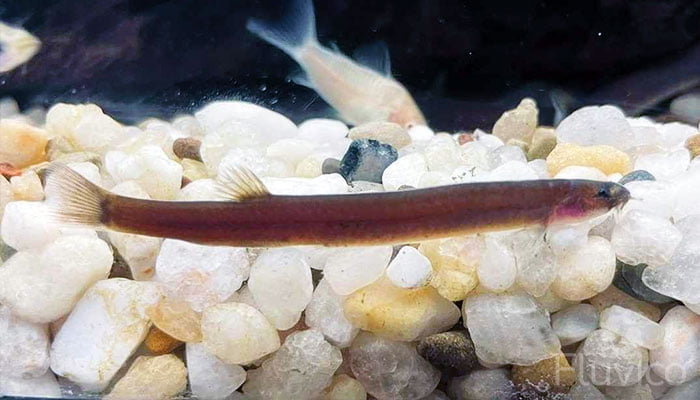
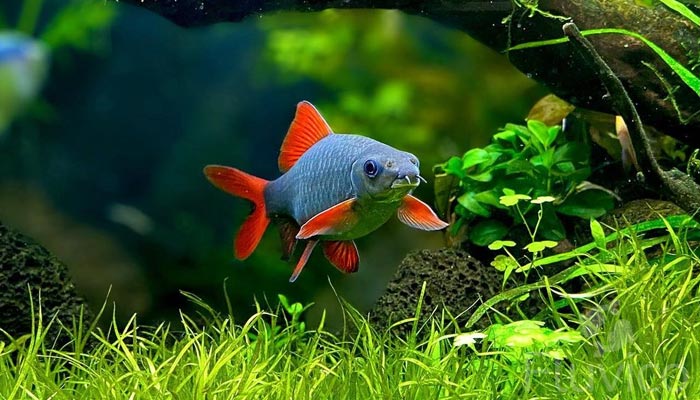

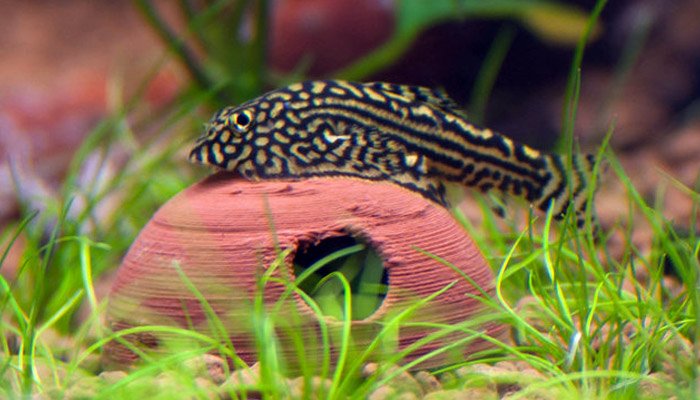
Leave a Comment